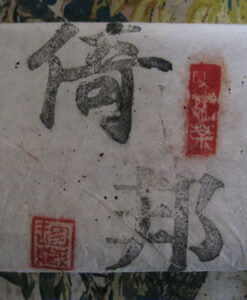What is Pu erh Tea
What is Pu erh Tea? – Ripe
 Most people have never heard of pu erh tea, and those who have are left wondering what is pu erh tea and what makes it special. It’s all in the fermentation, at least as far as ripe pu erh is concerned. For starters, pu erh is comprised of two types: raw and ripe. Raw is the unfermented type, whereas ripe is fermented. Aging is an important aspect of pu erh tea. It is far more important for the raw type than the ripe, though even ripe will improve with age… normally. Aging is a feature unique to pu erh. In China, pu erh is actually an investment. There is even a pu erh futures vehicle offered by a Shanghai investment firm. Most if not all investment centers around raw pu erh and the particular famous brands which produce them.
Most people have never heard of pu erh tea, and those who have are left wondering what is pu erh tea and what makes it special. It’s all in the fermentation, at least as far as ripe pu erh is concerned. For starters, pu erh is comprised of two types: raw and ripe. Raw is the unfermented type, whereas ripe is fermented. Aging is an important aspect of pu erh tea. It is far more important for the raw type than the ripe, though even ripe will improve with age… normally. Aging is a feature unique to pu erh. In China, pu erh is actually an investment. There is even a pu erh futures vehicle offered by a Shanghai investment firm. Most if not all investment centers around raw pu erh and the particular famous brands which produce them.
The Aging Process
Some of the aging that surrounds ripe pu erh tea involves mellowing the product after the processing that occurs during fermentation. This fermentation method is called, “wodui,” which is essentially composting. This is a relatively new development, which began in 1973 and was perfected by the Kunming Tea Company in 1975. This processing opened a new chapter in pu erh tea. As some will have it, wodui processing was an innovation developed in order to resolve the problem of raw pu erh’s slow development. In reality, part of the drive was necessitated by the destruction of much of the stored product during the Cultural Revolution (1966-76). Experts from Guangxi Province, which already had a fermented tea product called liu bao, were crucial in introducing the wodui process to the pu erh producers of neighboring Yunnan.
Processing
Before processing, excess moisture must be removed from the gathered leaves. Gathered leaves are usually spread upon concrete and allowed to dry between 3-7 days depending upon the season. Once the original material has sufficiently dried, a specialist is necessary to assist in the wodui processing. There are many different tools used at this stage. Numerous microbes are involved in the wodui process. The art of making a fine product lies in allowing the right microbes to breakdown the material while preventing the bad ones which will cause spoilage.
Selection of Ripe Pu erh Tea
There are four factors involved in the selection of ripe pu erh: clarity, purity, rectitude, and qi. As for clarity, it doesn’t matter whether the pu erh is raw or ripe, new or old, brick or cake, cheap or expensive, the first thing its how it smells. There is be a clean smell, no stinkiness or off odors. After fermentation, pu erh tea should definitely have an aged taste, but it should never taste of mold. If there is a moldy taste, then it means that during storage it was exposed to moisture, the storage was too humid, or the air was too stale. The saying, “old but not mold,” means that the aged taste releases with the hot water, but a moldy taste means that the tea has spoiled. No matter whether your puerh as been stored 30, 60, or up to a hundred years, its color should never be black nor should it ever possess of smells. The rectitude refers to it being stored in a place where the air circulates and there are no offending odors. The qi is discernment of the tea quality after brewing, specifically, storage conditions and oxidation duration.
Final Notes
Your humble Puerh Junky has just exposed to a quick overview on ripe pu erh. Historical factors necessitated developing a process for expediting the production of aged pu erh. Wodui is the name given to this process. There are several stages and tools involved in processing. The key is cultivation of the right microbial factors while avoiding spoilage. There are four characteristics used in evaluating the final product. Much of the end product depends upon storage conditions.
